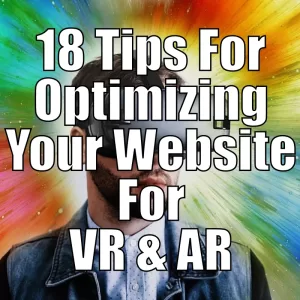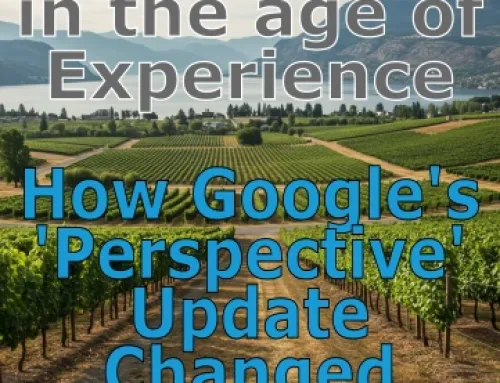
Virtual reality (VR) and augmented reality (AR) technologies are transforming the way people experience and interact with digital content. To make the most of these advancements, it’s essential to optimize your website for VR and AR experiences.
To learn more about optimizing your website for VR/AR or want to find out more about Kelowna SEO please don’t hesitate to contact us.
Follow these steps to ensure your website delivers the best possible experience for users on these immersive platforms:
- Responsive design: Design your website using a responsive framework to ensure it displays correctly on various devices, including VR and AR headsets. A responsive design will automatically adapt to different screen sizes and resolutions, providing a seamless user experience.
- 3D content: Create 3D models and assets for your website that can be easily displayed in VR and AR environments. Use 3D modeling software like Blender, Maya, or 3ds Max to create realistic and interactive models that enhance the immersive experience.
- WebXR API: Make use of the WebXR API, which allows web developers to create immersive experiences for both VR and AR devices. WebXR provides a unified interface for rendering 3D scenes, handling user input, and managing device capabilities.
- Accessibility: Ensure that your website remains accessible to users who may not have VR or AR-capable devices. Offer alternative methods for accessing your content, such as 2D images, videos, or interactive elements.
- Performance optimization: VR and AR experiences can be resource-intensive, so it’s essential to optimize your website’s performance. Minimize the size of your 3D assets, compress images, and use techniques like lazy loading to reduce the impact on load times. Also, consider using a content delivery network (CDN) to distribute your content more efficiently and reduce latency.
- User interaction: Design user interfaces (UI) and interactions tailored to VR and AR environments. Consider factors such as gaze-based input, gesture recognition, and controller support when designing interactions. Remember to provide clear instructions and visual cues to help users navigate your website in these immersive environments.
- Spatial audio: Enhance your VR and AR experiences with spatial audio, which adds an extra layer of immersion by creating a realistic sense of depth and directionality. Use audio libraries and tools like WebAudio, Resonance Audio, or Oculus Audio SDK to integrate spatial audio into your website.
- Testing and compatibility: Test your website on various VR and AR devices to ensure it performs well and offers a consistent experience across platforms. Be aware of the differences between devices and their capabilities and make necessary adjustments to accommodate these variations.
- Analytics: Gather data on how users interact with your website in VR and AR environments. Track metrics like session duration, navigation patterns, and engagement with interactive elements to gain insights into user behavior and preferences.
- Progressive enhancement: Implement a progressive enhancement strategy, which allows your website to deliver a basic experience to users on less capable devices, while progressively adding advanced features and optimizations for VR and AR devices. This ensures that your website remains accessible and functional for all users, regardless of their hardware capabilities.
- User safety and comfort: Prioritize user safety and comfort when designing your website for VR and AR experiences. Avoid sudden movements, extreme accelerations, or excessive rotations, as these can cause motion sickness for some users. Provide options for adjusting the level of immersion and interaction to accommodate individual preferences and comfort levels.
- Branding and storytelling: Use VR and AR experiences to enhance your brand’s storytelling and create memorable experiences for your audience. Utilize the immersive nature of these technologies to showcase your products or services in unique and engaging ways, and create emotional connections with your users.
- Social integration: Encourage social sharing and collaboration by integrating social features into your VR and AR experiences. Enable users to share their experiences on social media platforms, invite friends to join them in the immersive environment, or collaborate with others in real-time.
- Stay updated on technology advancements: As VR and AR technologies continue to evolve, it’s crucial to stay updated on the latest trends and best practices. Regularly review your website to ensure it remains optimized for current devices technologies and be prepared to adapt to new advancements as they emerge. Follow industry news, attend conferences, and engage with the VR and AR development community to stay informed and maintain a competitive edge.
- Cross-platform support: Aim for cross-platform compatibility to ensure your website’s VR and AR experiences are accessible to as many users as possible. Develop your content using WebXR, which supports a variety of VR and AR devices, including standalone headsets, mobile devices, and desktop setups.
- Privacy and security: Address privacy and security concerns by handling user data responsibly and securely. Obtain explicit consent from users before collecting their data and ensure that sensitive information is encrypted and stored safely. Additionally, comply with relevant privacy regulations, such as GDPR or CCPA.
- SEO and discoverability: Optimize your website for search engines to increase visibility and discoverability. Add metadata, structured data, and relevant keywords to help search engines understand and index your VR and AR content. Also, consider creating a sitemap that includes your immersive experiences.
- User feedback: Collect user feedback to continuously improve your VR and AR experiences. Encourage users to share their thoughts and suggestions through surveys, feedback forms, or social media. Use this feedback to identify areas of improvement and implement necessary changes to enhance the user experience.
Conclusion: Putting it all together
Optimizing your website for virtual reality and augmented reality involves considering various aspects, including responsive design, 3D content, user interaction, accessibility, and performance optimization. It also requires staying updated on technology advancements, ensuring cross-platform support, addressing privacy and security concerns, and collecting user feedback for continuous improvement.
By following these best practices and embracing the immersive capabilities of VR and AR technologies, you can create engaging, accessible, and memorable experiences for your users. As the adoption of these technologies continues to grow, a well-optimized website will not only set you apart from competitors but also future-proof your online presence in an increasingly immersive digital landscape.
Let’s Work Together
TELL US MORE ABOUT YOUR PROJECT
Let us help you get your website found. Or, if you simply have a few questions, then fill out the form below and we will get back to you.

